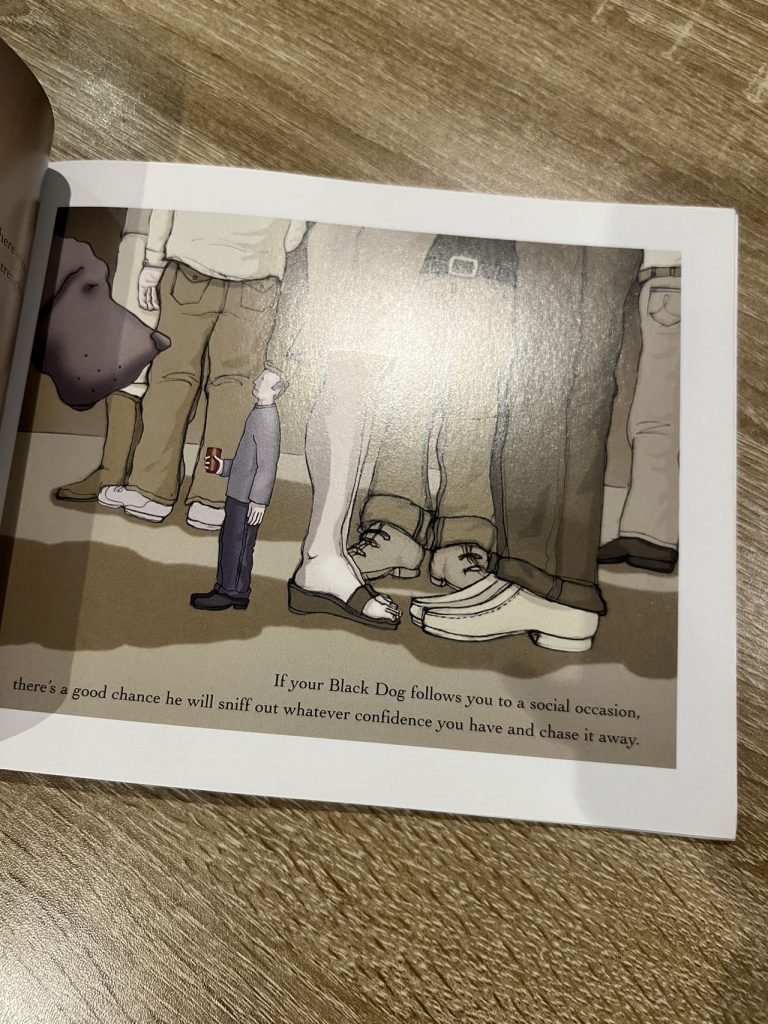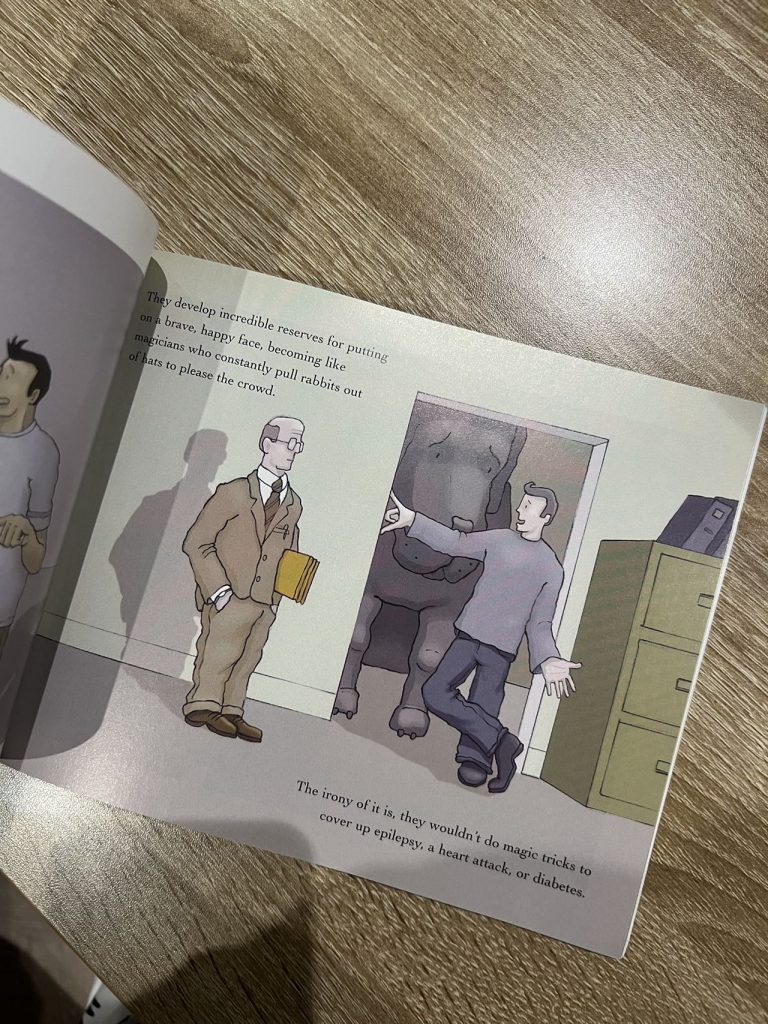I told Elizabeth about my intention to create a CHARACTER to represent bipolar.
This tutorial had a major breakthrough in that I showed Elizabeth my new IDEA: I was going to create a character to interpret bipolar disorder. To anthropomorphise and visualise mental illness. Elizabeth recommended a book to me called: I had a black dog, his name was depression
5/ I purchased the book and flipping through it gave me a lot of inspiration. In this book, the author, who suffers from depression himself, compares depression to a black dog.





Quotes from the book:
He liked to ruin my appetite.
He chewed up my memory my ability to concentrate.
Doing anything or going anywhere with the black dog required superhuman strength.
At social occasions he’d sniff out what confidence I had and chase it away.
My biggest fear was being found out.
I worried that people would judge me because of the shame and stigma of the black dog.
I was constantly worried that I’d be found out, so I invested vast amounts of energy into covering him up.
The most important thing to remember is that no matter how bad it gets, if you take the right steps, talk the right people, black dog days can and will pass.
I wouldn’t say that I’m grateful for the black dog but he’s been an incredible teacher.
He forced me to re-evaluate and simplify my life.
I learned that rather than running away from my problems, it’s better to embrace them.
The black dog may always be part of my life but he’ll never be the beast that he was – we have an understanding.
I’ve learned through knowledge, patience, discipline and humour, the worst black dog can be made to heel.
My thoughts
The metaphor of the black dog can benefit individuals who have been diagnosed with depression and those who have not because it provides both with a frame of reference for how depression might show up. Depression comes with many stigmas and misconceptions in the media. However, using the metaphor of a black dog can allow you and others to see that depression is not a matter of needing a mindset change or a pep talk; it often feels like an outside entity, wholly out of your control.
Once again, I am certain that the visual approach does allow one to understand a disorder in an easy and quick way, at least that is what I thought when I read this book. This reaffirmed my idea of wanting to present bipolar disorder using a visual approach.
Leave a Reply